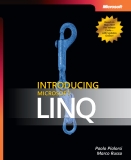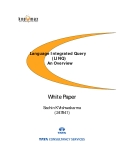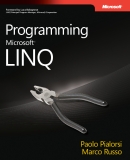
TÀI LIỆU THƯ VIỆN SỐ
- Toán học (523 )
- Vật lý (454 )
- Hóa học (373 )
- Sinh học (280 )
- Văn học (618 )
- Lịch sử (332 )
- Địa Lý - Thiên văn (306 )
- Ngoại ngữ (301 )
- Mỹ thuật - Hội họa (250 )
- Âm nhạc (355 )
- Thể dục (459 )
- Quản lý Giáo dục (453 )
- Tâm lý - Giáo dục (468 )
- Sư phạm Tiểu học (519 )
- Sư phạm Mầm non (608 )
- Kinh tế - Ngân Hàng (619 )
- Quản trị KD - Du lịch (531 )
- Công nghiệp (339 )
- Điện - Điện tử (646 )
- Công nghệ thông tin (917 )
- Thông tin - Thư viện (495 )
- Văn hóa - Nghệ thuật (305 )
- Khoa học thường thức (192 )
- Chính trị - Xã hội (394 )
- Nông nghiệp (730 )
- Luận văn (483 )
- Luận án tiến sĩ (121 )
Danh mục TaiLieu.VN
- Mẫu Slide Powerpoint
- Luận Văn - Báo Cáo (344720)
- Kinh Doanh Marketing (65512)
- Kinh Tế - Quản Lý (48934)
- Tài Chính - Ngân Hàng (55898)
- Công Nghệ Thông Tin (142209)
- Tiếng Anh - Ngoại Ngữ (47066)
- Kỹ Thuật - Công Nghệ (134345)
- Khoa Học Tự Nhiên (107174)
- Khoa Học Xã Hội (82451)
- Văn Hoá - Nghệ Thuật (54408)
- Y Tế - Sức Khoẻ (173915)
- Nông - Lâm - Ngư (62504)
- Kỹ Năng Mềm (29016)
- Biểu Mẫu - Văn Bản (27610)
- Giải Trí - Thư Giãn (51994)
- Văn Bản Luật (198854)
- Tài Liệu Phổ Thông (402015)
- Trắc Nghiệm Online (213578)
- Trắc Nghiệm MBTI
- Trắc Nghiệm Holland
Using LINQ to SQL
Over the last few months I wrote a series of blog posts that covered some of the new language features that are coming with the Visual Studio and .NET Framework "Orcas" release. Here are pointers to the posts in my series: Automatic Properties, Object Initializer and Collection Initializers Extension Methods Lambda Expressions Query Syntax Anonymous Types The above language features help make querying data a first class programming concept. We call this overall querying programming model "LINQ" - which stands for .NET Language Integrated Query. Developers can use LINQ with any data source. They can express efficient query behavior in their programming language of choice, optionally transform/shape data query results into whatever format they want, and then easily manipulate the results. LINQ-enabled languages can provide full type-safety and compile-time checking of query expressions, and development
Từ khóa: Project LINQ, LINQ to XML, LINQ to SQL, SQL Topics, Visual Basic .NET, LINQ Data Models, Microsoft LINQ
107 p huyhai 04/11/2012 371 0






